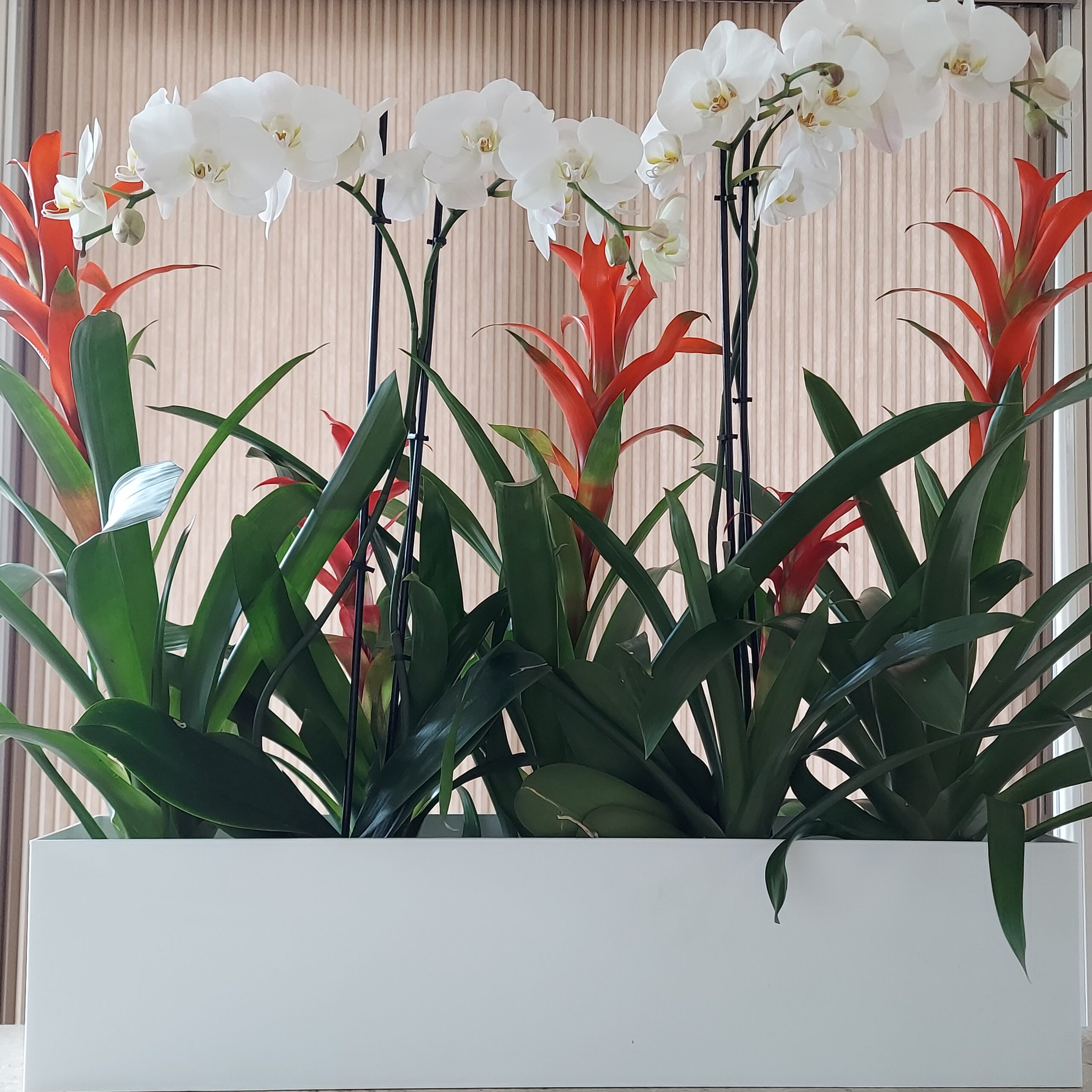
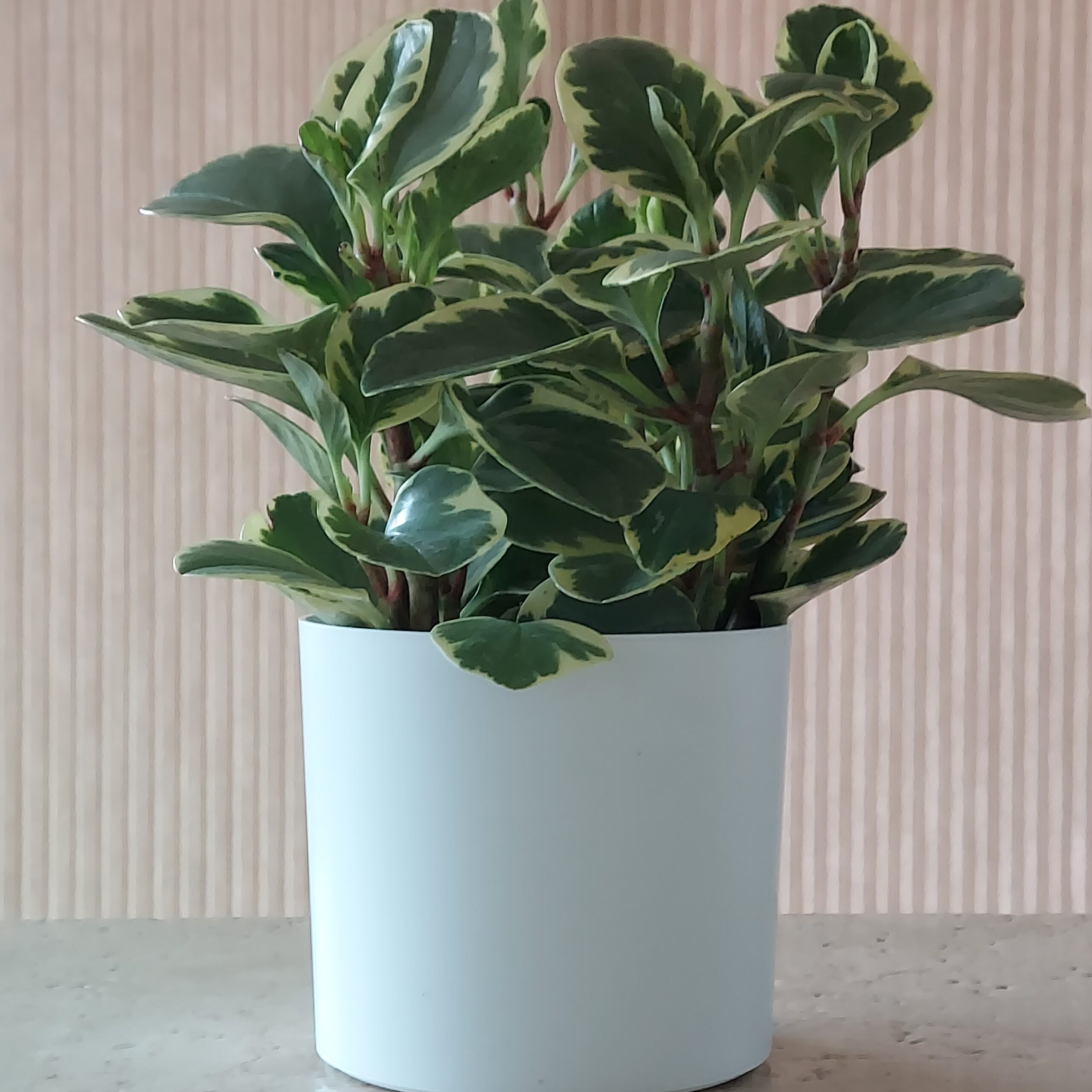
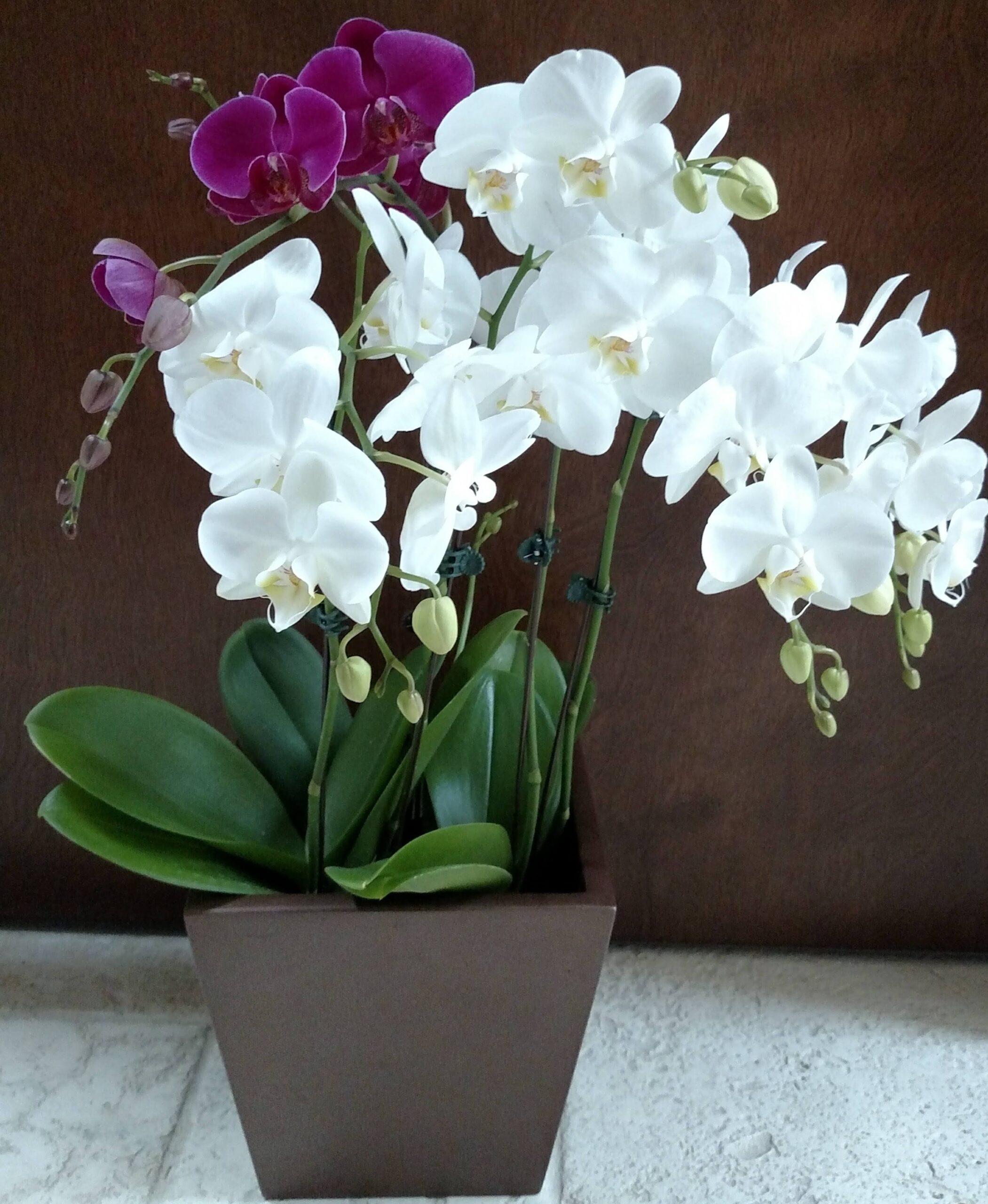
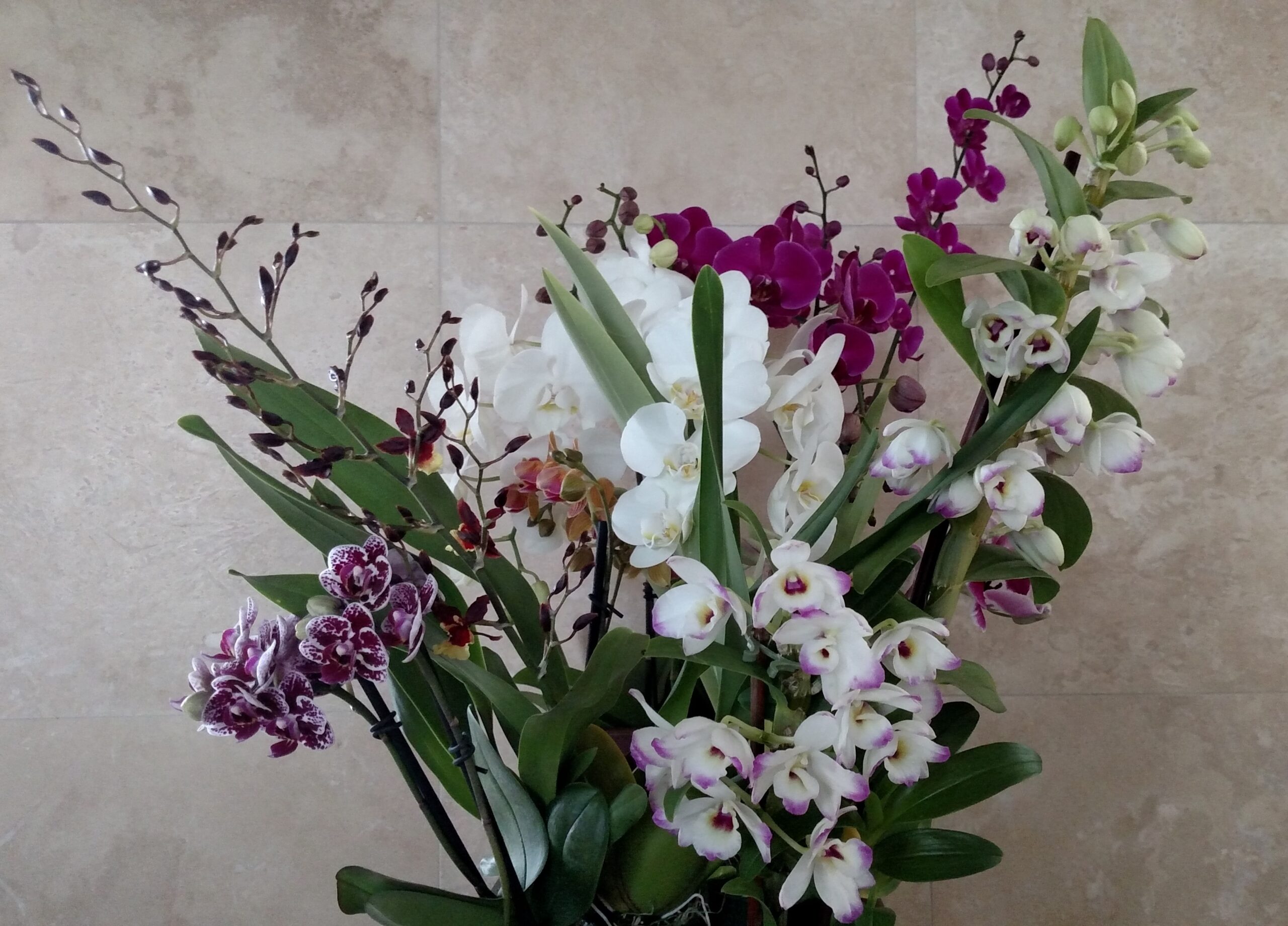
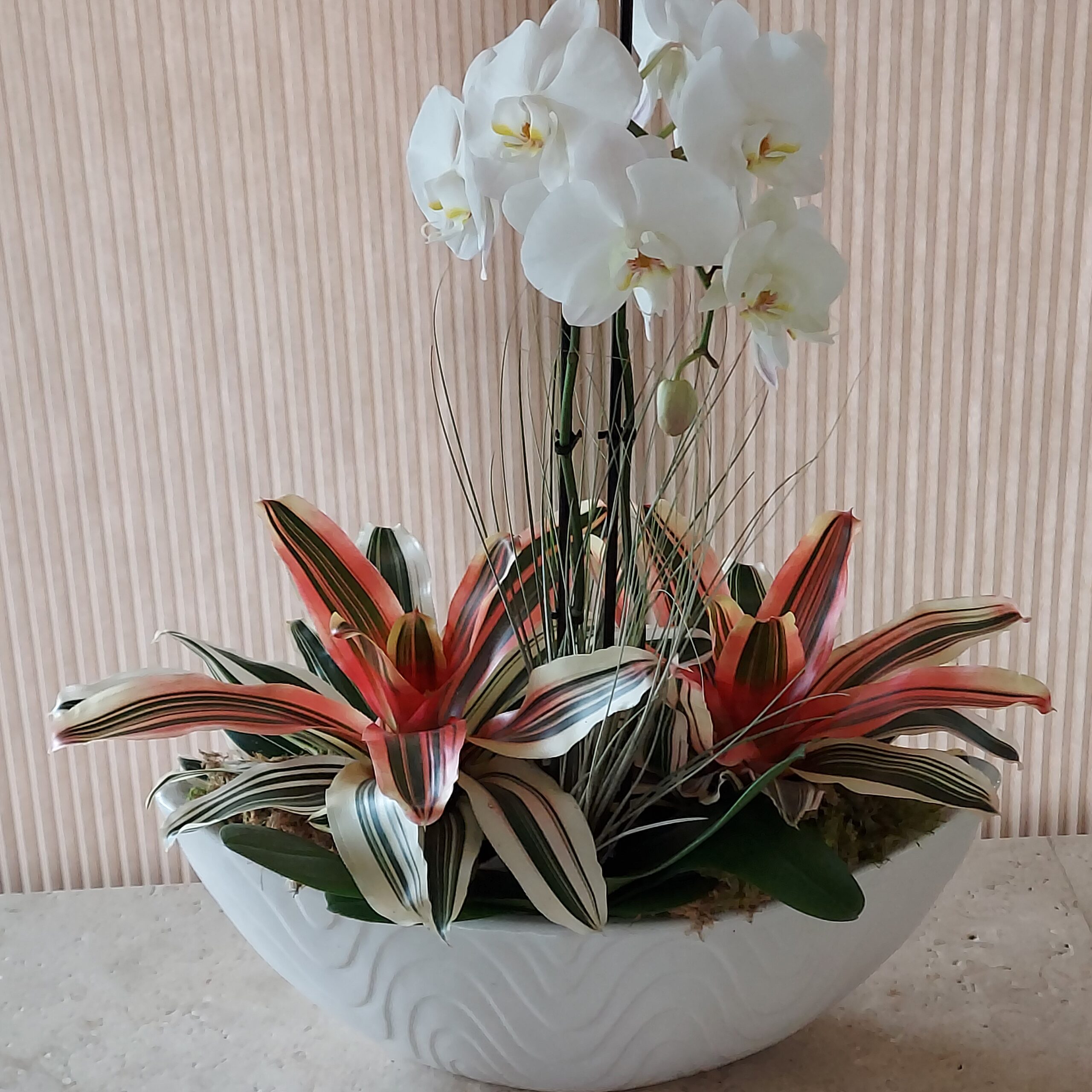
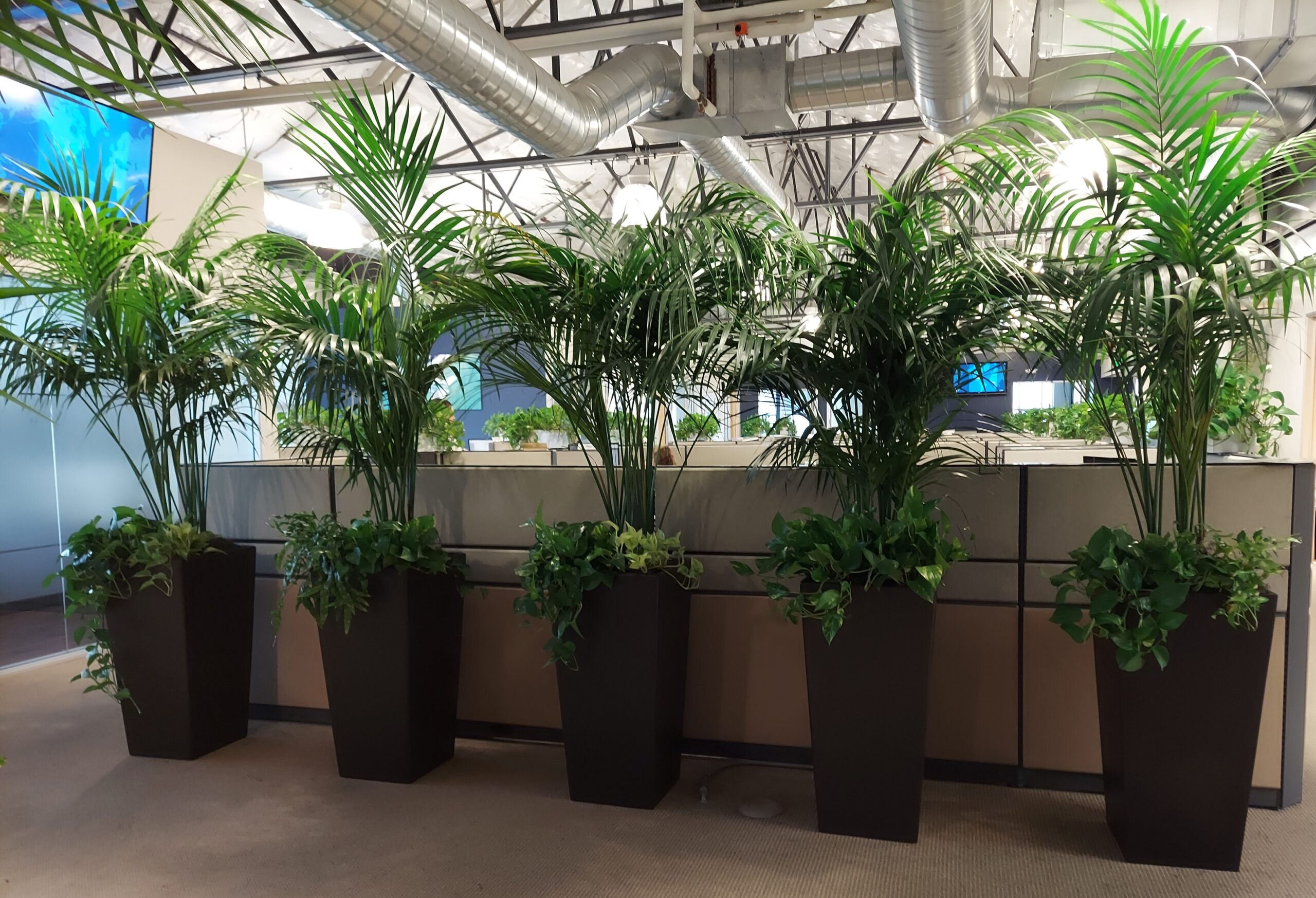
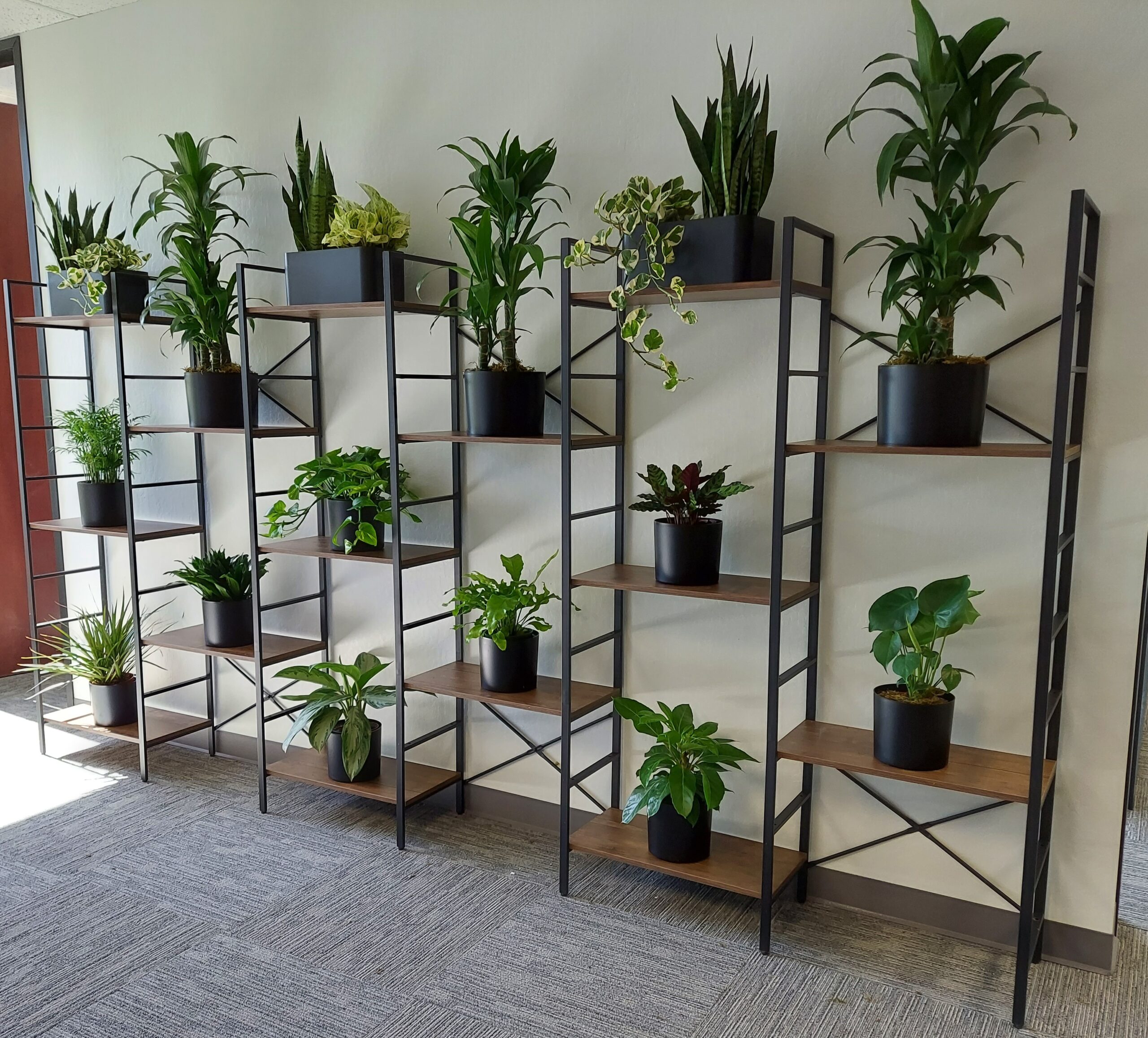
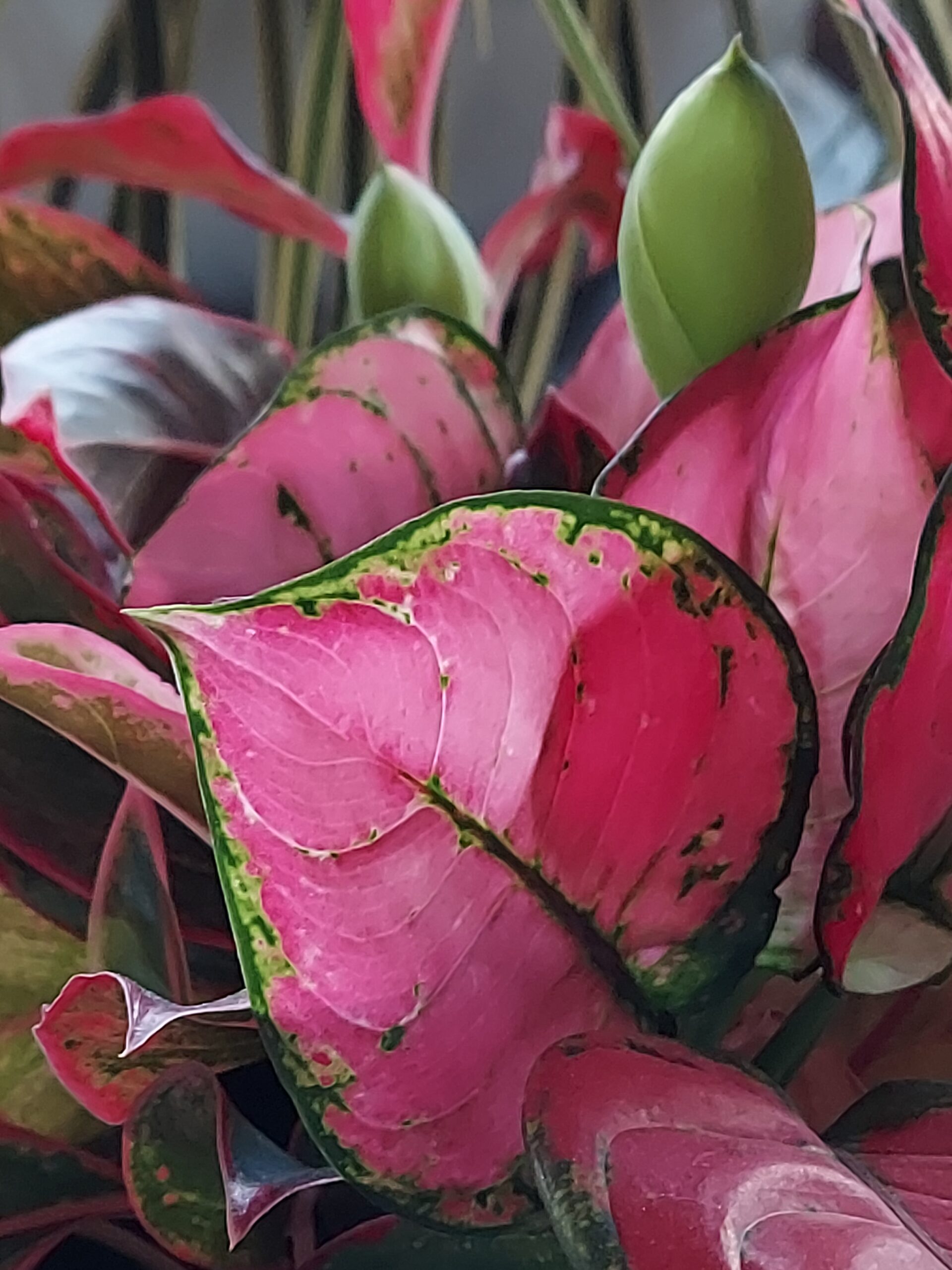
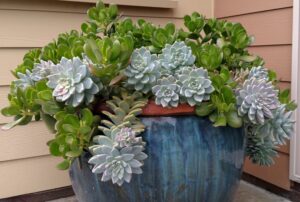


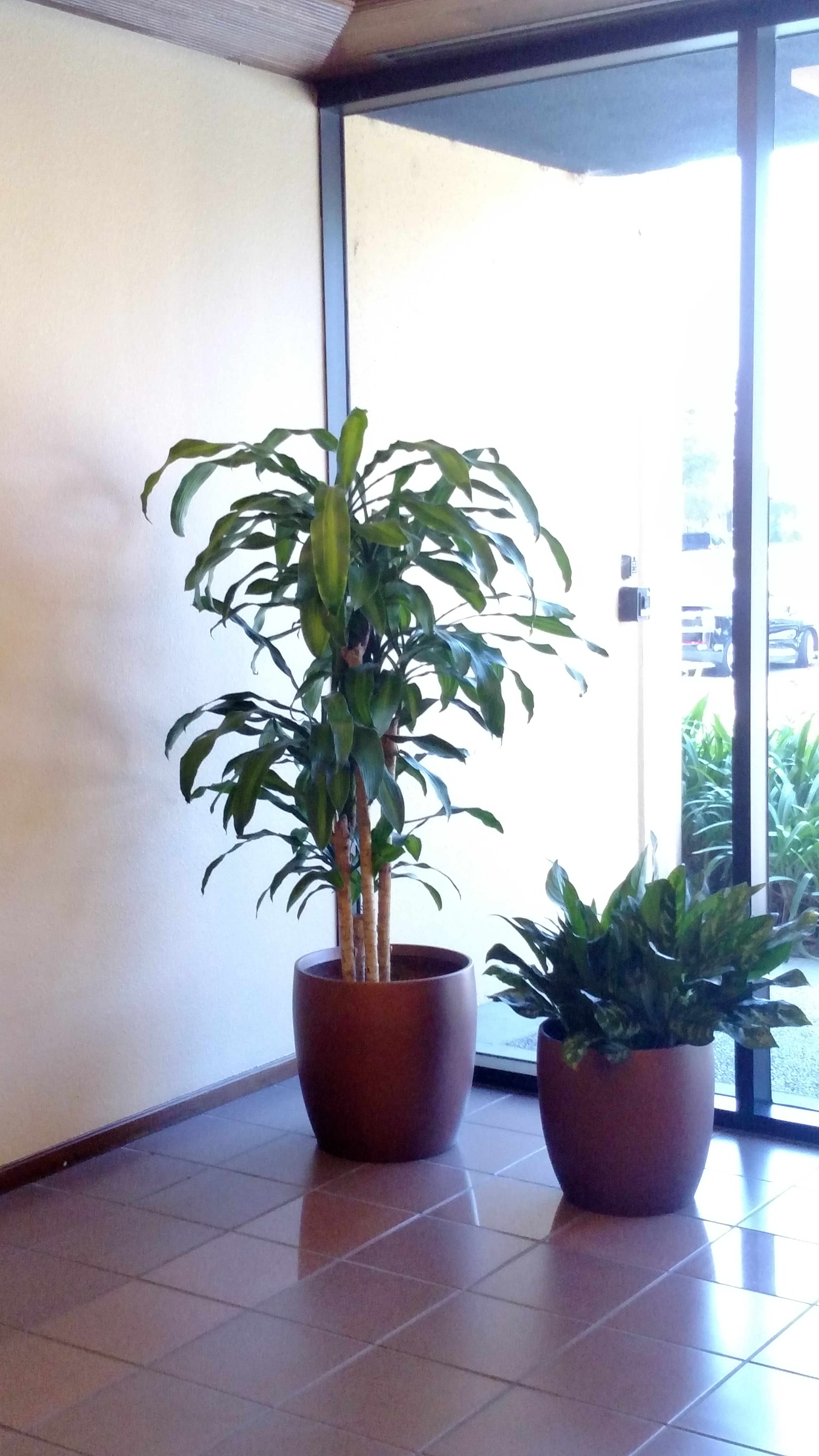
Dracaena Massageana & Aglaonema Maria
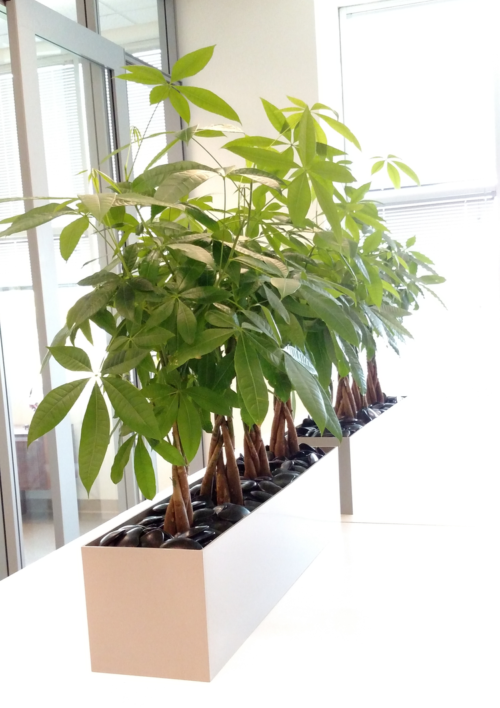
Pachira Money Tree Braid
How to Care for a Pachira Plant (Money Tree)
The Malabar chestnut (Pachira aquatica)
Plant hardiness zones 9b to 11, Department of Agriculture
Out in the open this can plant can grow up to 60 feel tall, up to 7 feet indoors.
Usually this plant is sold with a braided trunk which symbolizes locking in the luck or money.
Money Tree has become very popular, especially in the office and is very easy to grow.
Symbol of good luck and prosperity.
Light:
Prefers indirect light and will tolerate low light which is why they grow so well in the office. As the money tree grows the lower leaves may slowly turn yellow and fall. Or, you can just prune them off as needed.
Water:
Indoor growing once the Money Tree has been thoroughly watered the plant can go 10 days before watering again. Water just enough so the plant does sit in water.
The soil on top can go slightly dry before adding more water. Putting sphagnum moss on top of soil can help the plant stay moist longer.
Fertilizer:
In the spring is a good time to start fertilizing. I would fertilize every other month half strength starting in February until September and let rest for the winter.
Any indoor fertilizer, or a time release fertilizer.
Pruning:
Money Trees can be pruned as they get taller and leggy. Cut back any yellow leaves and prune down to keep the shape full. Sometimes a braided stem may die and may lose one part of the plant.
Repotting:
You may have purchased your Money Tree in a 6″ container. After a few years you can transplant into a 8-10″ new container with clean potting soil. New shoots may grow from the bottom away from the main stalk.
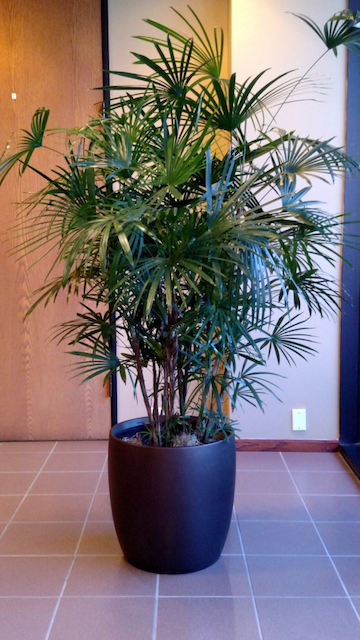
Rhapis Humilis

White Anthurium in Newpro Rectangle
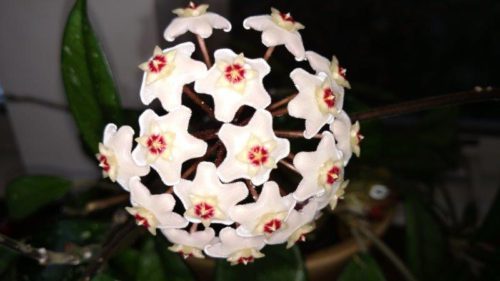
Hoya genus
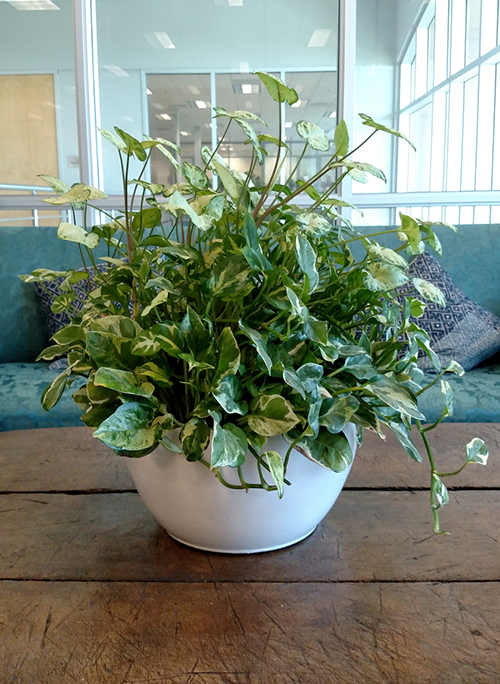
Potho n Joy – Arrowhead Bowl
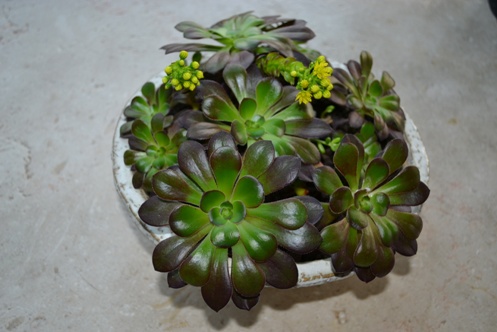
Succulent Bowl
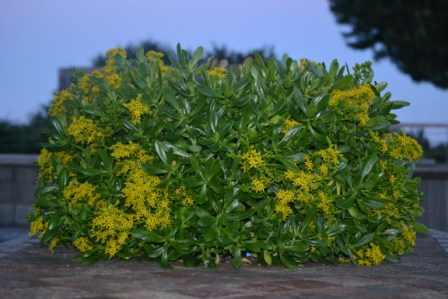
Super Roots Air Pot
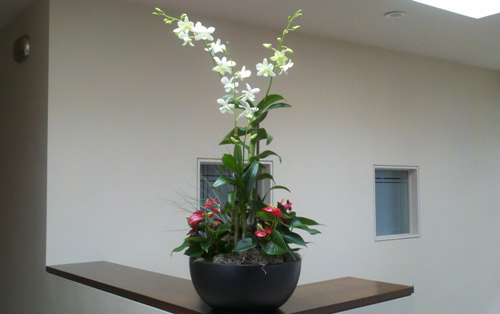
White Dendrobium with Red Anthurium
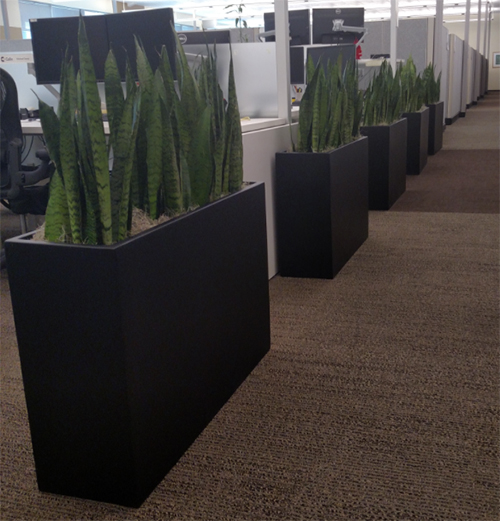
Sansevieria Zeylanica in ASI Earthwall
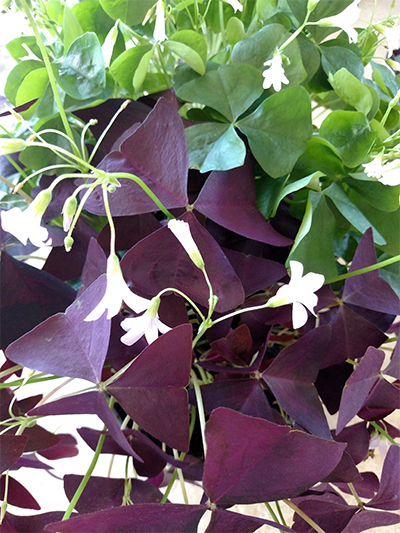
Shamrock ( Oxalis)
Oxalis Trangularis called false Shamrock, edible perennial plant as popular as a pot plant called Love Plant or purple Shamrock. The Shamrock grows in a mound of purple foliage with clusters of pink trumpet shaped flowers.
Oxalis can be poisonous to pets. Origin Mexico, 6-12″ height, hardy zone 7.
Shamrocks grow from tiny bulbs. Low growing foliage may be planted in fall or early spring. Soil likes to stay lightly moist during growing season. Allow soil to dry out between watering when dormant/winter.
Fertilize with half strength when soil is moisten first. Summer Shamrocks like a good leaching to remove accumulated salts. Prefer in summer shaded areas. Repot crowded Shamrock in late winter. Clean potting soil. If leaves become damaged from salt buildup or mites, cut back to roots. New foliage should return in days. Excess roots can be passed on to friends-they are that hardy.
Enjoy!
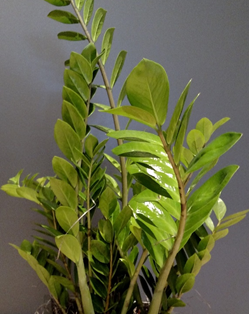
ZZ Plant
ZZ plants are in the Araceae family. The ZZ plant has several varieties besides the usual one. There is a Raven ZZ which has a deep purple-green sheen. The Raven ZZ is not as common as the regular one, however it takes similar cultural conditions. The ZZ plant Zensi is a smaller, dwarf variety of the regular ZZ plant. It is a slower grower and stays more compact.The ZZ plant can get about 3′ tall and about 3-4′ wide, but usually it is only about 20-24″ tall. It is in the same family as Dieffenbachia, Caladium, and Spathiphyllum. The ZZ plant does produce a flower, though it is considered insignificant. The flower is a greenish or brownish spathe and half hidden in the leaves. The plant usually flowers from mid-Summer to Autumn. Usually ZZ plants are not grown for their flowers, but for their toughness and beautiful leaves. ZZ plants are normally evergreen but become deciduous during drought periods. They survive through their rhizomes that store water.
The ZZ plant grows about 17-25″ tall from a stout underground succulent rhizome. The leaves are pinnate, 16-24″ long with 6-8 pairs of leaflets which are 3-5″ long. The stems of those pinnate leaves are thickened at the bottom. Each leaf on the ZZ plant contain an unusually high-water content of around 91%. And each leaf will last up to 6 months, so each plant is very hardy. The ZZ plant survives periods of drought in its native Africa, so it makes a great houseplant and can withstand neglect.
Care
The ZZ plant likes to be in a bright and warm location for the best growth, however it will also thrive in a darker place. ZZ plants are happy in almost any type of light. They tolerate low, medium or bright light; but they don’t want direct sun. When the ZZ plant has less light, the plant tends to be a darker green and a lighter green in a brighter area. ZZ plants should be grown in temperatures of at least 60 degrees F. They thrive in temperatures from 65-79 degrees F. During the Winter, the ZZ plant does better in a situation with higher humidity which also helps to prevent insect pests.
The best soil for a ZZ plant is one that is fertile but fast draining. It should be slightly acidic with a PH of 6.5. It should contain sand or clay to help enhance drainage. ZZ plants don’t want to be water-logged. A good potting soil for indoor ZZ plants would be 1/3 cactus soil and 2/3 regular potting soil. This mix would provide ample nutrition and ample drainage for the plant.
The best time to repot a ZZ plant is after the Winter rest period and after the first shoot-up growth during March or April. Most ZZ plants only need repotting every 2-3 years. If the ZZ plant has optimal conditions and is growing quickly, it might need repotting every year. When choosing a pot, make sure to choose one with a drainage hole. The ZZ plant needs to be able to have excess water draining away from the plant. If you use a saucer under the plant, be sure and empty in after 15 minutes. It is difficult to say how often a ZZ plant will need to be watered, but usually once every 2-4 weeks is sufficient. ZZ plants do best if they are too dry rather than too wet. This is due to the fact that the rhizomes store water and use it when no moisture can be drawn from the soil. During the Winter, the water requirement is reduced, but the ZZ plant will benefit from occasional water and misting. The best water for ZZ plants is soft water with few minerals – rainwater or distilled water are good for them.
ZZ plants don’t typically need a lot of fertilizer. They do best when fertilized about once a month during the growing season of March to October. Any liquid fertilizer that is suitable for houseplants is fine for ZZ plants.
Pests and Disorders
The main pests for ZZ plants are spider mites and scale. These can be hosed off with a stream of water if the infestation isn’t too bad. You need to protect the pot and soil before you do this by wrapping them up in a plastic bag. If plant is really infested with insect pests, you can use insecticidal soap or neem oil to contain the pests. Try to avoid putting the ZZ plants near radiators or heaters because they tend to dry out the air around the plants. This tropical plant needs moisture and will be subject to more pests without it. If the ZZ plant turns yellow, its usually due to excess water. Overwatering also results in leaves losing their firmness and becoming soft.
ZZ plants are poisonous to both humans and pets. They can cause skin and eye irritation with direct contact, and can cause stomachache, vomiting, and diarrhea if ingested. ZZ plants are in the Araceae family and they produce Calcium Oxalate. This substance is what causes skin irritation on contact with the sap and can cause irritation of the internal tissues if ingested.
If a child or pet eats part of a ZZ plant, they will experience discomfort but will be fine in the end. You can expect them to have a stomachache and a bad case of diarrhea. They may also have vomiting. To keep pets away, you can sprinkle orange peel or coffee grounds onto the soil around the ZZ plant. Cats and dogs tend to dislike the strong odors produced and will often stay away from the ZZ plants. You can also spray the ZZ plants with a very dilute vinegar solution and this will deter most animals.